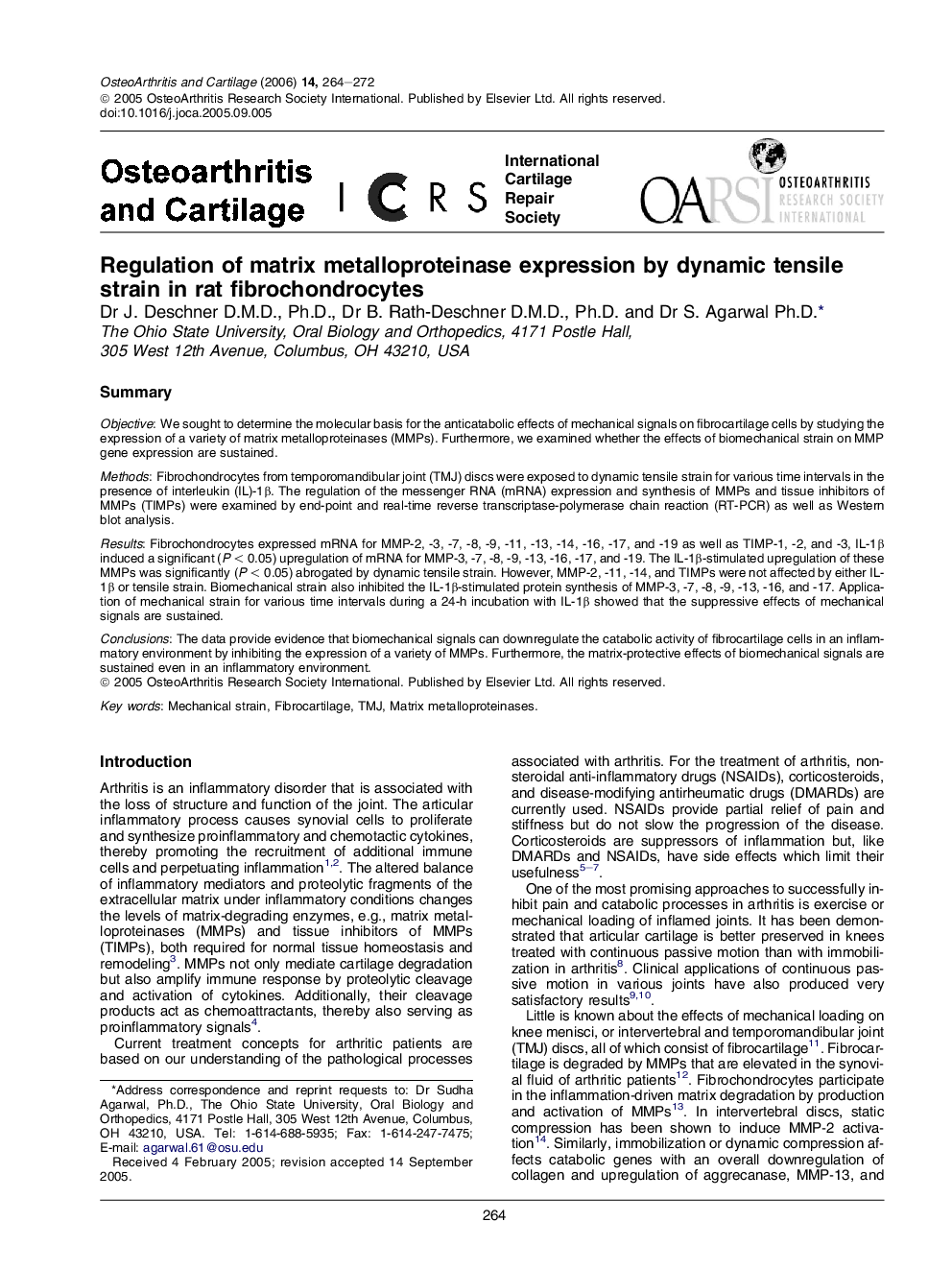| Article ID | Journal | Published Year | Pages | File Type |
|---|---|---|---|---|
| 3382139 | Osteoarthritis and Cartilage | 2006 | 9 Pages |
SummaryObjectiveWe sought to determine the molecular basis for the anticatabolic effects of mechanical signals on fibrocartilage cells by studying the expression of a variety of matrix metalloproteinases (MMPs). Furthermore, we examined whether the effects of biomechanical strain on MMP gene expression are sustained.MethodsFibrochondrocytes from temporomandibular joint (TMJ) discs were exposed to dynamic tensile strain for various time intervals in the presence of interleukin (IL)-1β. The regulation of the messenger RNA (mRNA) expression and synthesis of MMPs and tissue inhibitors of MMPs (TIMPs) were examined by end-point and real-time reverse transcriptase-polymerase chain reaction (RT-PCR) as well as Western blot analysis.ResultsFibrochondrocytes expressed mRNA for MMP-2, -3, -7, -8, -9, -11, -13, -14, -16, -17, and -19 as well as TIMP-1, -2, and -3, IL-1β induced a significant (P < 0.05) upregulation of mRNA for MMP-3, -7, -8, -9, -13, -16, -17, and -19. The IL-1β-stimulated upregulation of these MMPs was significantly (P < 0.05) abrogated by dynamic tensile strain. However, MMP-2, -11, -14, and TIMPs were not affected by either IL-1β or tensile strain. Biomechanical strain also inhibited the IL-1β-stimulated protein synthesis of MMP-3, -7, -8, -9, -13, -16, and -17. Application of mechanical strain for various time intervals during a 24-h incubation with IL-1β showed that the suppressive effects of mechanical signals are sustained.ConclusionsThe data provide evidence that biomechanical signals can downregulate the catabolic activity of fibrocartilage cells in an inflammatory environment by inhibiting the expression of a variety of MMPs. Furthermore, the matrix-protective effects of biomechanical signals are sustained even in an inflammatory environment.
